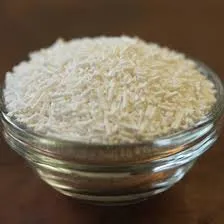
hplc solvents
The Importance of HPLC Solvents in Modern Analytical Chemistry
High-Performance Liquid Chromatography (HPLC) is a powerful analytical technique widely used in various fields such as pharmaceuticals, environmental analysis, and food safety. It is instrumental in separating, identifying, and quantifying components in complex mixtures. One of the critical factors that determine the success of HPLC is the selection of appropriate solvents. This article delves into the role of HPLC solvents and their impact on analytical results.
Understanding HPLC Solvents
HPLC solvents, also known as mobile phases, are the liquids that carry the sample through the chromatographic column. They are crucial for achieving efficient separation of compounds within a mixture. The selection of the right solvent depends on various factors, including the chemical properties of the analytes, the stationary phase of the column, and the type of detection method used.
Common solvents used in HPLC include water, acetonitrile, methanol, and isopropanol. Each of these solvents has unique properties that can influence the retention time and resolution of the analytes. For instance, acetonitrile is often preferred for its low viscosity and good solubility for many organic compounds. In contrast, water is often used in aqueous mobile phases, especially when dealing with polar compounds.
Types of HPLC Solvents
1. Aqueous Solvents Typically used in reversed-phase HPLC, aqueous solvents, usually in combination with organic solvents, help solubilize analytes while maintaining a polar environment. Water is the most common component, often mixed with solvents like acetonitrile or methanol.
2. Organic Solvents These include acetonitrile, methanol, and dichloromethane. Organic solvents are non-polar and are essential when working with non-polar compounds. Their ability to dissolve a wide range of organic substances makes them invaluable in method development and optimization.
3. Buffer Solutions In many applications, particularly in the analysis of biomolecules like proteins or nucleic acids, it is crucial to maintain a stable pH. Buffer solutions provide the necessary ionic environment and help optimize separation efficiency and peak shape.
hplc solvents

The Role of Solvent Quality
The quality of HPLC solvents is paramount for achieving reproducible and reliable analytical results. Impurities in the solvent can lead to noise in the baseline or unexpected retention times, which complicates data interpretation. Hence, it is recommended to use HPLC-grade solvents that have been distilled or otherwise purified to remove contaminants.
Additionally, the selection process should include considerations such as solvent compatibility with detection techniques. For instance, If a UV detector is employed, the solvent should not absorb at the wavelength of detection. The use of solvents with minimal UV absorbance increases sensitivity and improves the limit of detection for the analytes of interest.
Optimization of Solvent Composition
Solvent composition can be optimized through methods such as gradient elution, where the composition of the mobile phase changes over time to enhance separation based on the differing affinities of analytes for the stationary phase. This approach can significantly improve resolution, especially when dealing with complex mixtures.
Moreover, understanding the interaction between the solvent and the analytes is crucial. This interaction includes hydrogen bonding, van der Waals forces, and dipole-dipole interactions, all of which can affect the migration rate of the compounds through the column. Thus, method development often involves extensive experimentation to find the ideal solvent combination.
Conclusion
In conclusion, the significance of HPLC solvents cannot be overstated. They are integral to the efficiency and effectiveness of the chromatography process, affecting everything from separation quality to detection sensitivity. As analytical techniques continue to evolve, a deeper understanding of solvent properties and their interactions with analytes will remain vital. By selecting appropriate solvents and optimizing their compositions, chemists can ensure high-quality results that advance research and development across multiple scientific disciplines.
-
Pure Sodium Dichloroisocyanurate Dihydrate | Powerful DisinfectantNewsAug.29,2025
-
Industrial Chemicals: Quality & Purity for Every IndustryNewsAug.28,2025
-
Nitrile Rubber Honoring Strict Production StandardsNewsAug.22,2025
-
Aspartame Ingredients Honoring Food Safety ValuesNewsAug.22,2025
-
Fertilizer for Balanced Plant NutritionNewsAug.22,2025
-
Cyanide Gold Processing with High Purity AdditivesNewsAug.22,2025
-
Formic Acid in Textile Dyeing ApplicationsNewsAug.22,2025
Hebei Tenger Chemical Technology Co., Ltd. focuses on the chemical industry and is committed to the export service of chemical raw materials.
-

view more DiethanolisopropanolamineIn the ever-growing field of chemical solutions, diethanolisopropanolamine (DEIPA) stands out as a versatile and important compound. Due to its unique chemical structure and properties, DEIPA is of interest to various industries including construction, personal care, and agriculture. -

view more TriisopropanolamineTriisopropanolamine (TIPA) alkanol amine substance, is a kind of alcohol amine compound with amino and alcohol hydroxyl, and because of its molecules contains both amino and hydroxyl. -

view more Tetramethyl Thiuram DisulfideTetramethyl thiuram disulfide, also known as TMTD, is a white to light-yellow powder with a distinct sulfur-like odor. It is soluble in organic solvents such as benzene, acetone, and ethyl acetate, making it highly versatile for use in different formulations. TMTD is known for its excellent vulcanization acceleration properties, which makes it a key ingredient in the production of rubber products. Additionally, it acts as an effective fungicide and bactericide, making it valuable in agricultural applications. Its high purity and stability ensure consistent performance, making it a preferred choice for manufacturers across various industries.





